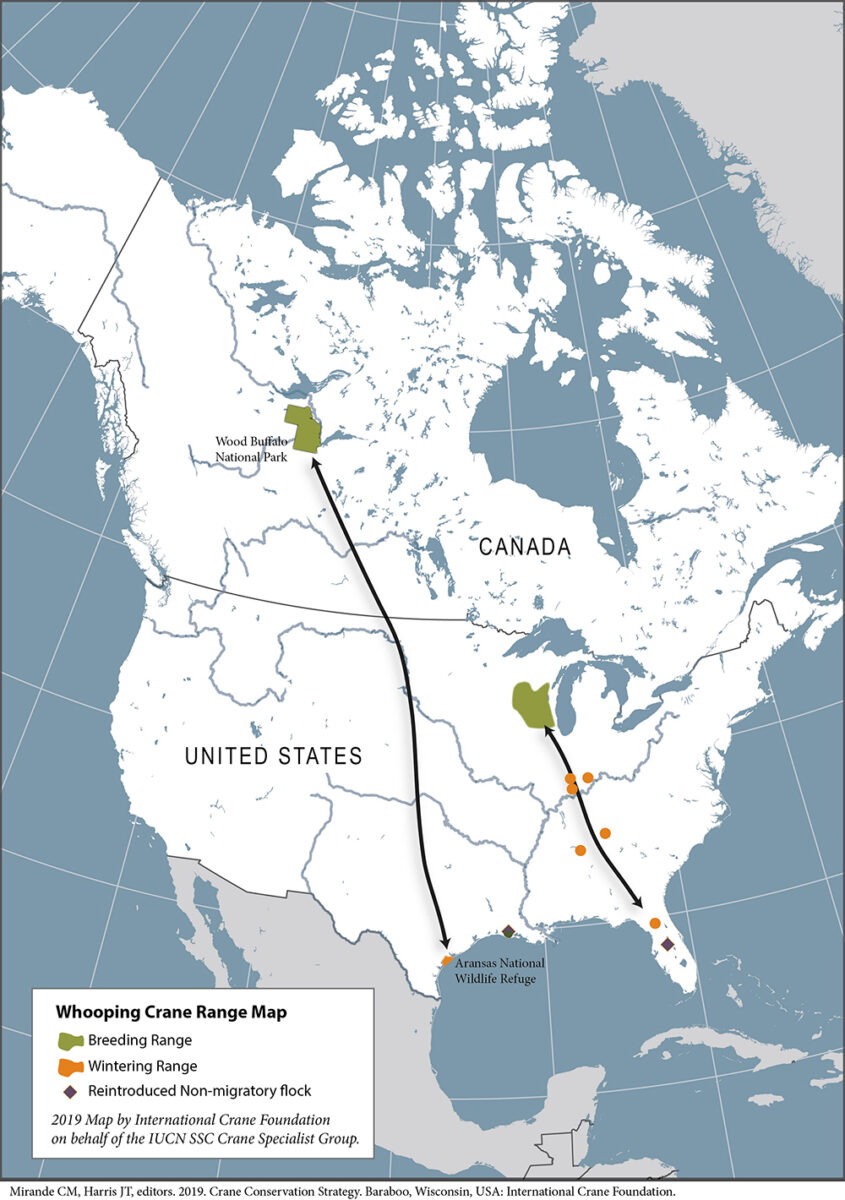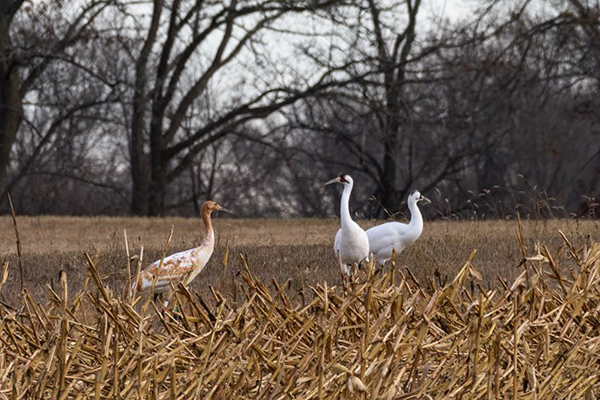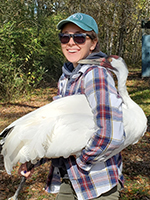Whooping Cranes are one of the rarest and most endangered birds in North America. In the 1940s, Whooping Cranes faced near extinction, but their numbers have since rebounded thanks to conservation efforts to rebuild and re-establish populations across North America. Today, Whooping Cranes occupy four distinct populations, one of which is the Eastern Migratory Population. The Eastern Migratory Population was first reintroduced to Wisconsin in 2001, and today around 75 Whooping Cranes occupy this migratory flyway.

This summer, the Eastern Migratory Population continued to grow as it welcomed 14 wild-hatched chicks, two of which survived to fledge. A fledgling is a young bird who has gained the ability to fly. For Whooping Cranes, fledglings share similarities with adults while maintaining distinct differences. A Whooping Crane adult is described as a five-foot-tall white bird with a long neck, long black legs, black wing tips, a red crown, a yellow eye and a black mustache. A Whooping Crane fledgling is the same height, but they have mottled white and cinnamon-colored feathers throughout their head, neck and body, black wing tips, blue eyes, and they lack the distinct facial markings of an adult.

In late October and early November, the adult and fledgling Whooping Cranes in Wisconsin will begin their migration to their wintering areas, primarily in western Indiana and northern Alabama. Whooping Cranes embark on migration in the fall to move to spaces where they can continue to access food, water and warmer temperatures throughout the winter. In preparation for migration, a Whooping Crane family, typically consisting of no more than four cranes, will join a larger flock of Sandhill Cranes. They will forage and rest in these flocks before departing on an up to the 700-mile flight to their wintering habitat!
For the fledgling Whooping Cranes that hatched this year, this migration will be their first of many and arguably will be their most dangerous migration. During this time, they will face many new challenges, including exhaustion, inclement weather, predators, unfamiliar habitats, low resource availability and potential collision risks, such as powerlines. To minimize the chances of collisions with powerlines, the International Crane Foundation has partnered with power companies to encourage the use of high-vis reflective flight diverters, which help to make powerlines more visible and minimize collision risk.
While on migration, Whooping Crane adults and fledglings also risk poaching. The International Crane Foundation is committed to safeguarding the future of Whooping Cranes and eradicating the risk of poaching, and to do so, we are asking for your help!
You can help Whooping Cranes on their migration by following these crane-safe behaviors:
- Report sightings of Whooping Cranes to bandedcranes.org. Your sightings help us to understand the migratory routes and stopover habitats Whooping Cranes are using and the risks they face along the way.
- Respect private property and only park in designated areas to view Whooping Cranes.
- Report all Whooping Crane harassment, disturbance or poaching to local authorities.

Story submitted by Stephanie Schmidt, Whooping Crane Outreach Coordinator. Click here to learn more about our work in North America.
